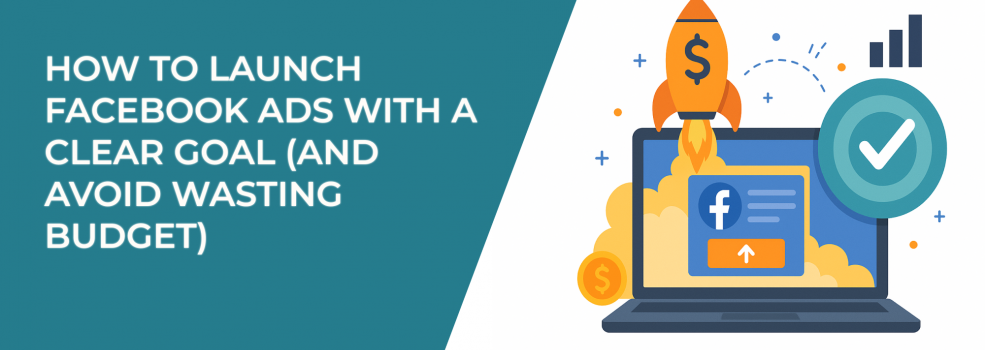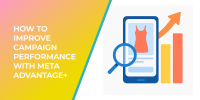Running Facebook ads without a clear objective is like throwing darts blindfolded — you might hit something eventually, but you’ll waste a lot of resources getting there.
If you’ve ever felt frustrated by ad campaigns that don’t convert, inconsistent results, or wasted budget, you’re not alone. Facebook’s advertising platform is powerful, but only when used with intent. This article will walk you through how to set meaningful goals before launching your ads — and how that single decision can save you thousands in wasted spend.
Let’s break it down.
Why Your Ad Goal Is Everything (Yes, Everything)
Before you even think about writing copy or choosing an audience, you need to decide: what exactly do you want this campaign to achieve?
Sounds basic, right? But too often, advertisers rush to boost posts or test new creatives without anchoring them to a solid, measurable goal. And without that anchor, your targeting, messaging, and budget decisions float aimlessly.
Want to drive traffic to your site? Grow your email list? Retarget warm leads? Promote a seasonal sale?
Each goal requires a different setup. A conversion-focused campaign is going to look very different from one that’s built to increase reach. And Facebook’s algorithm rewards clarity — the better it understands what you want, the more efficiently it can deliver.
Pro tip: don’t confuse business goals with ad goals. “Get more sales” might be your business goal, but your Facebook ad might be designed specifically to drive traffic to a product page or capture email signups for remarketing later.
Choosing the Right Campaign Objective (Don’t Skip This Step)
When setting up your ad in Meta Ads Manager, Facebook asks you to choose an objective. This isn’t just a formality — it's the foundation of how your campaign gets optimized.
Here’s the catch: pick the wrong one, and you’ll sabotage your results before your ad even launches.
Let’s say you want people to download your free guide. If you select Traffic, Facebook will send you users likely to click — but not necessarily to convert. If you select Leads and connect it to an instant form or conversion event, Facebook will find people more likely to take action.
That small change can completely shift your ROI.
Some common Facebook ad objectives and what they’re best for:
-
Awareness: When you want to reach as many people as possible.
-
Traffic: Great for getting clicks, but not always high-quality ones.
-
Leads: Useful for building email lists or pre-qualifying prospects.
-
Engagement: Ideal for social proof or building visibility around a post.
-
Sales: Best when you have a pixel set up and know your conversion events.
Tip: always match your campaign objective to the user action you want — not just the business outcome you hope for.
Want a breakdown of what each objective actually does and when to use it? Check out our Meta Ad Campaign Objectives guide for a deeper dive into choosing the right setup.
Don’t Just Target — Strategize
You’ve probably heard this before: “Your ad is only as good as your targeting.” And while that’s true, it’s only part of the equation.
In 2025, Facebook's targeting has evolved. Interest-based targeting is more limited, and behaviors are harder to predict. So relying solely on cold audience demographics isn’t enough.
What’s working now?
-
Custom audiences based on site activity,
-
Lookalikes built from your best customers,
-
Retargeting sequences that match the buyer journey,
Let’s say your goal is to convert warm leads. Instead of targeting a broad audience with a generic offer, retarget users who viewed your product page but didn’t check out. Then show them a tailored ad with a limited-time discount.
Think of your audience not as a pool, but as a journey. Where are they now, and what message will nudge them forward?
If you're still getting familiar with targeting options, this Facebook Ad Targeting 101 guide will help you build smarter, more focused audiences.
Budget Without Guesswork
Here’s where a lot of advertisers go wrong: they set a daily budget with no idea what kind of return to expect. Or worse, they launch a campaign with a vague hope that “something will work.”
A better approach? Work backwards from your goal.
If you want 100 new leads and your average cost per lead is $5, you’ll need to spend at least $500. Sounds obvious, but many advertisers skip this step and then wonder why results feel random.
Also, consider your learning phase. Facebook’s algorithm needs time to gather data — usually around 50 optimization events per ad set within a week. Underspending can lock your campaign in learning mode indefinitely, stalling performance.
Some quick tips:
-
Start with at least the minimum needed to exit learning quickly.
-
Don’t spread your budget too thin across too many ad sets.
-
Monitor cost per result closely, not just impressions or reach.
And remember: scaling doesn’t mean doubling your budget overnight. Ramp up gradually while tracking performance shifts.
Working with a limited budget? Here’s how to optimize campaigns with small daily spends without sacrificing performance.
Align Your Creative With Your Goal
Even the best targeting can’t save a mismatched ad. If your goal is to capture leads, but your creative only builds awareness, your results will suffer.
Ask yourself: Does this ad clearly tell people what to do next?
Strong creatives do three things:
-
Grab attention (through visuals or headlines).
-
Communicate a benefit (not just a feature).
-
Drive a specific action (click, sign up, buy).
For example, if your goal is lead generation, test an image with a direct call-to-action like “Download the Free Guide” rather than a vague message like “We’re Experts in X.”
For help writing ad copy that aligns with your objective, check out this guide on creating Facebook ad copy that converts.
Think about the scroll. People don’t pause unless you give them a reason.
Measure What Actually Matters
Once your campaign is live, the work isn’t over. Now’s the time to track your performance against your original goal — not just surface-level metrics like likes or shares.
Keep your eyes on:
-
Cost per result (based on your actual objective).
-
Conversion rate.
-
Click-through rate.
-
Frequency (if people see your ad too often, results drop).
If results aren’t where you want them to be, don’t panic. Adjust one variable at a time: test a new headline, change your audience, or tweak your call-to-action.
Avoid common traps like:
-
Making decisions based on 1–2 days of data.
-
Judging campaigns before the learning phase ends.
-
Chasing vanity metrics instead of real business outcomes.
Always bring it back to the goal you set on Day 1.
Final Thought: Intent Is the Real Shortcut
Want to stop wasting budget? Start with clarity. When every part of your campaign — from the audience to the creative to the objective — is aligned with a specific goal, you’ll see better results. Period.
Running Facebook ads doesn’t have to feel like gambling. But it does require strategic intent.
So before you hit “publish” on your next ad, ask yourself: what do I want this to achieve, and is every piece of this campaign built to support that?
That’s where the real ROI begins.

